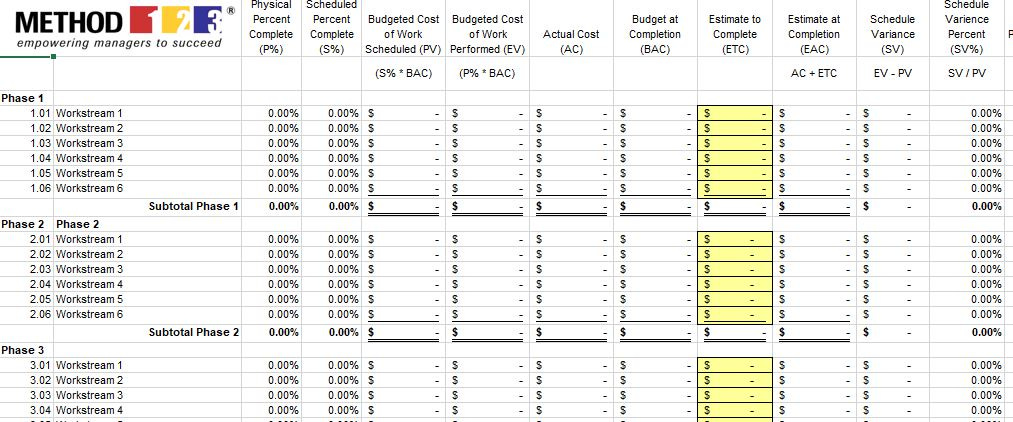A few years ago we were asked by a well known non-profit to build their PMO from the ground up over the course of a 6-month engagement.
A bit of background:
In the previous year, a major consulting firm did a deep dive into the organization’s operations. Their recommendations are summarized below:
Enhance your organizational model to align with business
Develop a strategic plan
Implement an enterprise PMO to lead the planning and execution
Over the next few posts, we’ll describe the chronological process that we went through to deliver an enterprise PMO and a strategic plan in just 6 months.
Month 1:
Our company was asked to submit and present a proposal for the executive committee to review. Our approach was to submit a 9-page Business Case for the development of an enterprise PMO. A key part of our strategy was to demonstrate to the organization that we ‘eat our own dog food’. We knew that they were not a highly structured organization and that they had some doubts about implementing a complicated, process-driven PMO. They worried about the effect that it would have on their culture and how it would affect the way they had always done things. By using a Business Case as the vehicle to pitch our proposal we demonstrated the value of our process. They didn’t realize that our Business Case proposal would be exactly what we intended to implement in the new PMO as the first step in getting a project launched. They just knew that they like the clarity of the document which expressly addressed:
The 6 key objectives of the PMO
The scope of the PMO, including all the people, process, and tools required
All the deliverables laid out in chronological order
All the key stakeholders, their expectations, and their impact
Critical Success Factors
Detailed assumptions and constraints
High-level risks
A timeline, project schedule
An ROI based on their historical metrics
Our budget
In short, when they demonstrated that they were really happy with the thoroughness and approach of our proposal — we obtained their support in implementing a similar requirement for all projects going forward. And they knew we were capable of helping their organization produce the same quality output for their internal projects.
…to be continued
Coming Soon…
Method123 has started work on our next software product designed to facilitate strategic planning and tracking. Our goal is to have a minimum viable product (MVP) in Q1 2021.
We don’t believe that strategy or strategic planning has to be some gigantic process that requires a herculean effort once a year — only to get left behind on some corporate boardroom’s whiteboard. We think we have a better way…
Want to get on our preview list?
Career Corner
Ready for the interview, folks?
Leadership, transparency, and ownership…
We mentioned in the last article how important these 3 are to hiring managers. Now, all we have to do is convince the hiring manager during the interview that you possess all these qualities!
Let’s start with some not-so-obvious assumptions. You’re qualified for the job (not over or underqualified). You really want the job and they are actively trying to hire someone for the role. Sounds silly, but if the circumstances are different you may do with a different approach.
Type 1 interview questions (First-Base): These aim to find out very broadly what you’ve been doing recently on your job, what your knowledge and experience is, and what you bring to the table. My general advice for these types of questions is to assume they have been recording you for the past year or so. Don’t oversell your experience, your contribution, or your knowledge. It could easily go badly for you if you start to get probed and challenged on something you really can’t substantiate. This isn’t the tipping point for the interview — it’s the warm-up. So don’t embellish.
Also, as mentioned in the previous post, lean heavily on the word “I” and not “we” because they really want to know what YOU did and can do for them — not what your team or current company did. Some people mistakenly slip into ‘we’-mode because they want to emphasize that they are team players. There are better ways to demonstrate that like saying “I had a great support team to help…I was responsible for overall scheduling of resources”.
For these types of questions you should have a well-rehearsed response in advance, but make an effort to interject some thoughtful commentary as well so it doesn’t seem like you’re reading off a teleprompter!
In the next article, we’ll take a look at the post-ice-breaker “so, tell me about yourself” type of question — and see what it take to get into 2nd Base safely…
Webinar Series
Risk Assessment
For project managers, risk management is a way of life. Method123 has you covered with our Project Risk Assessment Tool.
Budget Management
Method123 developed this Project Budget Template focusing on 3 things:
Simplicity - It's easy to use
Flexibility - It's adaptable to your needs
Functionality - It's complete and thorough
Share the Wealth
Method123’s Affiliate program enables members to spread the word about our best selling PM Template Kit and MPMM Professional methodology software — and get paid for it!
Snag 20% commission on any sales using the unique links provided in your own Affiliate Dashboard. Sell of Facebook, Instagram, Twitter, Reddit, LinkedIn, email, website, or blog — basically, anywhere you can post a link.





